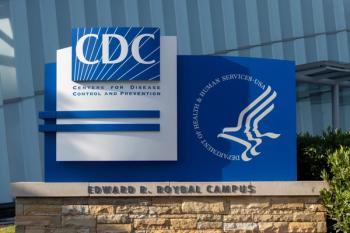
Study: Rounding Ipilimumab Doses Saves Money Without Compromising Patient Outcomes
Rounding doses of ipilimumab to the nearest 50 mg resulted in significant cost savings for institutions, a new study found.
Rounding doses of ipilimumab to the nearest 50 mg resulted in significant cost savings for institutions, a new study found.
Rounding ipilimumab doses to the nearest 50 mg can save institutions a significant amount of money without compromising patient outcomes, the results of a new study suggest.
The maximum potential costs savings for 63 doses of ipilimumab given during the March 2011 to February 2012 study period was $155,400, with the total saved per patient ranging from $2640 for 2 therapy courses to $16,320 for 4 therapy courses. The average amount saved per dose of ipilimumab ranged from $960 per treatment in a patient receiving 4 therapy courses, to $5280 per treatment for 3 therapy courses.
“Our experience shows that dose rounding of ipilimumab to the nearest 50 mg can result in a significant cost savings to the institution,” the authors wrote. “. . . The anticancer activity of biologic therapy typically relies on several factors such as characteristics of the patient, characteristics of the cancer, drug to target interactions, and neutralizing antibody formation. Also, biologic therapies often have alternate surrogates of dose response rather than a true maximum tolerated dose traditionally examined for chemotherapy . . . For these reasons, we have concluded that a small variation in dose such as 0.3 mg/kg (~10% variation in dose) should not have a significant clinical impact on the patient.”
The study appeared in the January edition of Journal of Oncology Pharmacy Practice.
The cost of new biologic drugs can quickly add up, particularly when preservative-free versions expire before use, the authors noted. Dosing for most anticancer agents relies on patient weight or body surface area; however, common clinical practices allow chemotherapy doses to be calculated to the nearest milligram, and also allow clinicians to keep dosing constant unless there is an actual body weight change greater than 5% to 10%.
Their research cohort included 22 participants with metastatic melanoma who received at least 1 dose of ipilimumab, with 21 patients receiving rounded ipilimumab doses. A single participant did not require any dose rounding, the researchers noted.
Researchers noted the height, weight, dose given, number of doses received, side effects, and response data in each participant. Participants received a 3-mg/kg dose of actual body weight every 21 days for the duration of their treatment. Doses were rounded to the nearest 50 mg.
Researchers defined waste as the amount of drug, in milligrams, that would have been discarded had they adhered to the calculated dose rather than rounding.
Of the rounded doses, 12 were rounded up and 9 were rounded down.
Participants received an average of 2.86 doses, with 55% of participants receiving the recommended 4 rounds of chemotherapy. Among 20 patients who either completed or stopped treatment, 1 patient had a documented clinical response to the treatment, 1 had stable disease, and the remaining participants demonstrated disease progression upon evaluation. Adverse events related to the therapy were successfully treated using published guidelines, the authors noted.
“. . . If we conservatively estimate that a third of patients will receive ipilimumab as a part of their therapeutic regimen at a mean of 3 doses each, the potential for annual cost savings from dose rounding of ipilimumab will equate to nearly US $22 million,” the authors wrote.
Newsletter
Stay informed on drug updates, treatment guidelines, and pharmacy practice trends—subscribe to Pharmacy Times for weekly clinical insights.




















































































































































































































